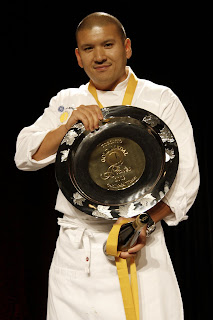
See what I did up there? I had to give this blog entry a jazzy name to make it sound more appealing because kale is not known as a fun food. But it is a superfood, owing to the fact that it’s naturally blessed with nutrients and health-promoting properties.
Especially when it comes to krispy kale.
Oven roasted crispy kale
Wash kale well and remove leaves from stems. Dry very well. Preheat oven to 350 degrees. Toss leaves in some olive oil (about a tbsp), add a good pinch of salt, some chili flakes and pepper, toss again and spread leaves evenly on an oiled baking sheet (you may need to do this in two shifts). Roast for 7 minutes, toss around and roast for about 10 minutes more, or until crisp. If still not crisp, spread them out some more and roast longer still – you just need to get all of the moisture out of there (maybe your bunch is extra big, maybe you didn’t dry it as well as you could have, maybe the pan is too crowded?) Like spinach, it shrinks down to almost nothing, so eating it all in one sitting shouldn't be a problem. (Note: It doesn’t stay crispy in the fridge.)








